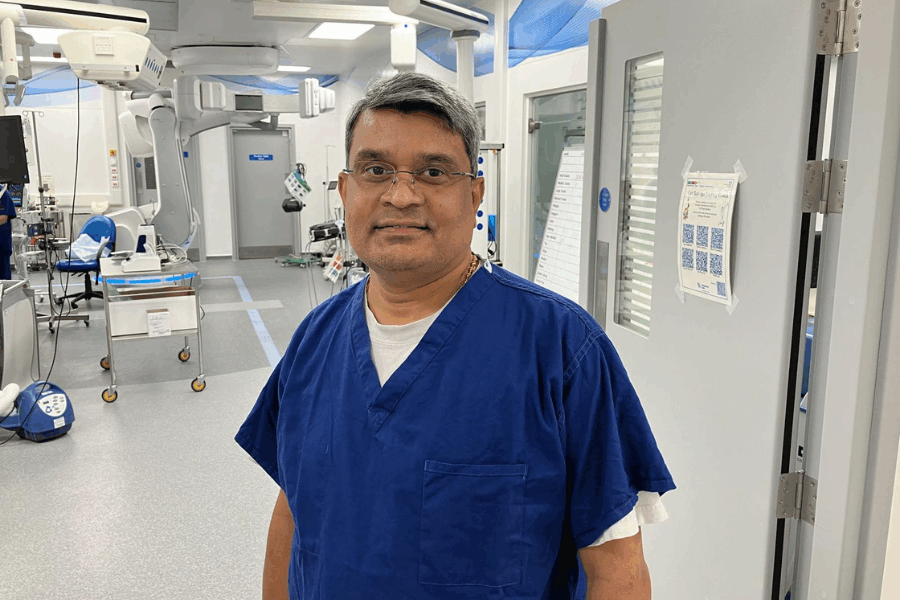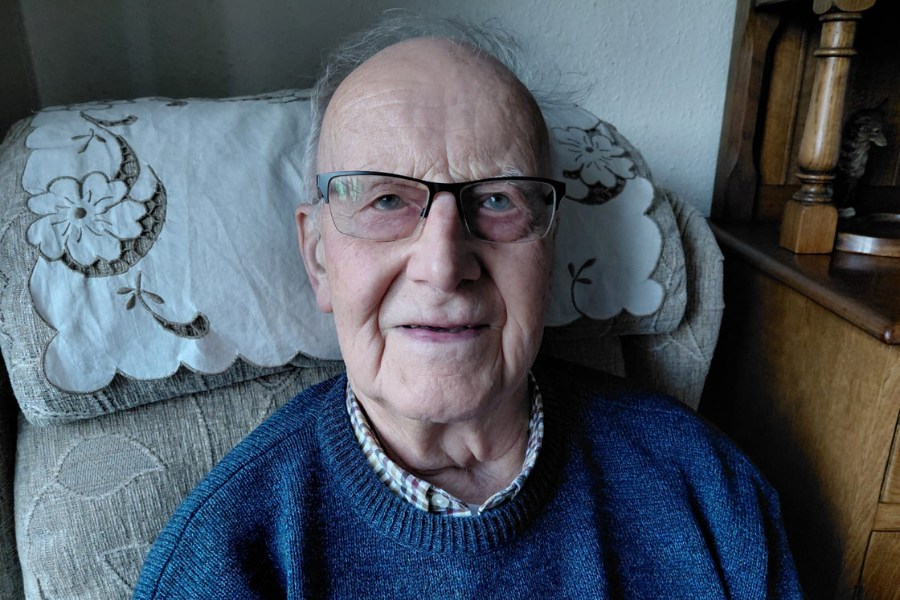
A pioneering procedure carried out at the University Hospitals of Leicester NHS Trust (UHL) has made European medical history thanks to a specialist team led by Consultant Vascular and Endovascular Surgeon, Dr Badri Vijaynagar.
The innovative procedure took place at the Glenfield Hospital, where a team of vascular specialists used two resorbable (dissolving) scaffolds to restore blood flow to a patient’s foot. The scaffolds act like temporary supports, opening the narrowed artery to allow blood to flow more freely. Similar resorbable scaffold technologies have already been trialled in the United States, where studies have shown promising results in restoring circulation and improving wound healing for patients with severe below-knee artery disease.
The European-first procedure was carried out on 90-year-old John Atton, who has been living with an ulcer on his foot for more than 12 months. Despite regular treatment and dressings, the sore struggled to heal due to poor circulation caused by Chronic Limb-Threatening Ischaemia (CLTI), a serious condition that can cause pain, infection and, in some cases, lead to amputation.

John said: “I’ve had the ulcer for well over a year, and it’s been very painful, particularly at night. When we were told about this new procedure, I was hopeful that it might finally help my foot to heal. Everything moved quite quickly from the consultation with the doctor to having the surgery. The doctors who looked after me were very good and I want to thank them all.”
The operation was completed under local anaesthetic, and John was able to return home soon afterwards. He will return to the Glenfield Hospital in the coming weeks for a follow-up review as the scaffolds continue to dissolve, and circulation improves.
Dr Badri Vijaynagar, Consultant Vascular and Endovascular Surgeon at UHL, led the surgery.
He said: “This is the first time in Europe that two resorbable scaffolds have been placed in the artery. The technique allows us to restore blood flow without leaving a permanent metal stent behind. Over time, the scaffolds dissolve, allowing the artery to function naturally again.
“The treatment offers new hope for patients living with chronic wounds and poor circulation, especially those with diabetes or peripheral arterial disease. By improving blood flow to the lower leg and foot, the procedure helps wounds receive the oxygen and nutrients they need to heal. It also reduces the risk of infection and can significantly improve comfort and mobility.
“It’s a proud moment for our team, who worked hard to bring this new procedure to patients treated here at UHL. Being the first in Europe to successfully perform this procedure is a proud moment for us and for vascular care in the UK.”